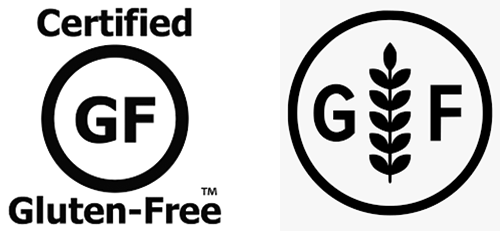Literature states that approximately 6% to 13% of the population suffers from non-celiac gluten sensitivity (NCGS).1,2 The precise percentage is challenging to estimate since NCGS is difficult to diagnose. Unlike other gastrointestinal diseases, there are not any definitive biomarkers to identify NCGS.3
NCGS is defined as a non-autoimmune, nonallergic reaction to gluten that affects the female to male population 6:1.2 NCGS is also called gluten sensitivity, gluten hypersensitivity, and non-celiac gluten intolerance.2
The Celiac Disease Foundation defines gluten as the protein found in wheat, rye, barley, and triticale that acts “as a glue that holds food together” and keeps the shape of food.4 A growing population is reacting to gluten, and it can be a complicated and time-consuming diagnosis for some people.
Dental patients can present with a myriad of symptoms.
Symptoms of NCGS
A vast number of symptoms are exhibited by patients with NCGS, including neuropathy, anemia, fatigue, headaches, brain fog, depression, anxiety, mouth ulcerations, weight loss, diarrhea, constipation, malaise, muscle pain, abdominal pain, flatulence, and bloating. 2,5,6 The onset of symptoms can begin hours to days after the ingestion of gluten2,7
Many of the NCGS symptoms are also seen in other gastrointestinal conditions such as celiac disease (CD), a wheat allergy, or irritable bowel syndrome (IBS).
Similarities Between NCGS and Irritable Bowel Syndrome
It is often difficult to distinguish between the symptoms of NCGS and IBS, which can lead to misdiagnosis. The Mayo Clinic states that IBS affects approximately 15% to 25% of the population.8 Like NCGS, there are no conclusive tests to diagnose IBS, and it does not produce intestinal damage.8,9 It is thought that gluten and wheat could trigger IBS symptoms. However, some research states IBS patients “less often identify gluten as [a] trigger.”9
Symptoms of IBS can include abdominal pain, gas, bloating, constipation or diarrhea, or both. Patients can also experience anemia, weight loss, and rectal bleeding.8 Patients with suspected IBS or NCGS may undergo tests to rule out other gastrointestinal conditions, such as celiac disease or a wheat allergy.2
Ruling Out Celiac Disease and a Wheat Allergy
The first step to diagnosing NCGS is to rule out both CD and a wheat allergy.2,7,9 A diagnosis of NCGS is not as straightforward as a diagnosis for celiac disease (CD) since there are not any definitive histological or serological markers.2
The serological markers are raised levels of antigens detected in the body due to an immune response to gluten. IgA-tTG is the serological test that identifies CD in most patients.2 CD is diagnosed by blood testing to check for antigens reacting to gluten within the body and a duodenal biopsy that identifies damaged villi in the intestinal tract.10 The diagnostic testing for CD should be done while the patient is consuming gluten in their diet.2,9
A wheat allergy is a common food allergy seen mostly in the pediatric population.2 Testing for a wheat allergy looks at specific IgE serum levels, a skin patch test, and a detailed food journal, but it can also be difficult to identify.2
Once CD and a wheat allergy are ruled out, the quest continues to determine if a person suffers from gluten sensitivity or another health condition. NCGS symptoms can manifest in numerous and debilitating ways, so a correct diagnosis and treatment can be life-changing.
Treating Suspected NCGS
The research recommends a gluten-free diet (GFD) to treat NCGS (Dieterich, 2019).9 This can be a difficult life change for people, and there are a vast number of foods and products that contain gluten. Patients need to strictly adhere to a GFD, and collaboration between the medical team and a dietician can help patients understand healthy food choices.
Some gluten-free food choices include fruits, vegetables, meat, poultry, fish, dairy, legumes, and nuts.11 There are numerous gluten-free foods on the market. Consumers need to be aware of the possible contamination of gluten in products. If consumers want to make sure that the products they buy are gluten-free, they should look for a gluten-free seal somewhere on the packaging.
Is it More Than Gluten?
Research shows that patients who stick to a low FODMAP diet can also have reduced gastrointestinal symptoms from NCGS.9 The American College of Gastroenterology defines FODMAPs as fermentable, oligo-, di-, monosaccharides, and polyols.12 The National Celiac Association states FODMAPs are “short-chain carbohydrates that are resistant to digest.”13
As the group of sugars passes through the intestinal tract, they attract water and ferment, causing gas and discomfort in the IBS and NCGS populations.12 Reducing or eliminating FODMAPs from the diet is the primary treatment for patients that suffer from IBS.9 Foods that have a higher amount of FODMAPs include wheat, rye, dairy, fruits, vegetables, and artificial sweeteners.14
The road to a successful diagnosis and treatment of gastrointestinal diseases can be a long and arduous one. Dental patients must be diligent about tracking their eating habits and logging subsequent symptoms, then adhere to the medical team’s recommendations. It is important to support patients through their journey and give them the encouragement they need to stay on track.
A Personal Journey to Being Gluten-Free
In 2004, I began to feel bloated and suffered from chronic constipation. The doctor told me I had irritable bowel syndrome with chronic constipation (IBS-C) and to avoid complex carbohydrates. I didn’t listen. A few years later, I began having more severe symptoms, including joint pain in my hands, chronic headaches, anxiety, and chronic IBS-C issues.
Due to the pain in my left index finger, I was tested for rheumatoid arthritis, which runs in my family. After that diagnosis was negative, I went to an orthopedic specialist and was told that it was most likely trigger finger. I was given anti-inflammatories and told that if the symptoms did not subside, then surgery would be likely.
The thought of surgery terrified me because I figured my clinical career would be over. I tried anti-inflammatories, chiropractic care, massage therapy, and acupuncture for my symptoms. Nothing completely took the pain away, but some days were better than others.
For a few months, gluten also caused fatigue and brain fog, which greatly affected my quality of life. The brain fog made it difficult to concentrate, and my short-term memory was all but nonexistent. The struggle to focus at work made me afraid that I was making mistakes.
At home, I would go to bed as early as possible and wake up feeling unrested and in pain. I struggled to rein in my anxiety in both settings, which eventually led to a prescription medication. Unfortunately, I did not realize the connection between my symptoms and my gut, so for several years, I dealt with various distressing symptoms while practicing 40 hours a week and raising two children.
In early 2018, my 10-year-old daughter started complaining of constant stomach aches and occasional knee pain. Her pediatrician recommended a laxative for constipation and said the knee pain was associated with growing pains. Her stomach pain became more frequent and resulted in more doctor appointments.
We cut out dairy since I had an intolerance, and we waited. The stomach pains subsided a little, but not completely. The doctor decided to have her tested for celiac disease, which came back negative. After doing some research and discussing how gluten can affect the body, we decided to go gluten-free. It was difficult to give up my diet of fresh bread, pizza, and basically the carbohydrates I loved.
The immediate improvement of my health was nothing short of a miracle. Within one week, most of my symptoms were gone completely. I didn’t have any joint pain in my hands or headaches, and the constant bloating and abdominal pain resolved. I was able to concentrate and focus at work. I enjoyed spending more quality time with my family.
Some days, I reflect on how poorly I felt and still cannot believe that gluten had caused so much toxicity in my body. My doctor did not see the need for me to undergo any testing since I had felt such relief through a gluten-free diet. Personally, I have not found it hard to maintain a gluten-free diet because of how awful I felt for so long. My hope is that my personal account of gluten intolerance will raise awareness and hopefully save others from years of painful symptoms.
Now Check Out the Peer-Reviewed, Self-Study CE Courses from Today’s RDH!
Listen to the Today’s RDH Dental Hygiene Podcast Below:
References
- Igbinedion, S., Ansari, J., Vasikaran, A., et al. Non-celiac Gluten Sensitivity: All Wheat Attack is not Celiac. World J of Gastroenterol. 2017; 23(40): 7201-7210. doi 10.3748/wig.v23.i40.7201. https://pubmed.ncbi.nlm.nih.gov/29142467/
- Taraghikhah, N., Ashtari, S., Asri, N., et al. An Updated Overview of Spectrum of Gluten-related Disorders: Clinical and Diagnostic Aspects. BMC Gastroenterol. 2020; 20: 258. doi 10.1186/s12876-020-01390-0. https://bmcgastroenterol.biomedcentral.com/articles/10.1186/s12876-020-01390-0
- Roszkowska, A., Pawlicka, M., Mroczek, A., et al. Non-celiac Gluten Sensitivity: A Review. Medicina (Kaunas). 2019; 55(6): 22. doi 3390/medicina55060222. https://pubmed.ncbi.nlm.nih.gov/31142014/
- What is Gluten? (n.d.). Celiac Disease Foundation. https://celiac.org/gluten-free-living/what-is-gluten/
- Zis, P., Georgios Sarrigiannis, P., Ganesh Rao, D., Hadjivassiliou, M. Quality of Life in Patients with Gluten Neuropathy: A Case-controlled Study. Nutrients. 2018; 10(6): 662. doi 10.3390/nu10060662. https://www.ncbi.nlm.nih.gov/pmc/articles/PMC6024358/
- Non-celiac Gluten/Wheat Sensitivity. (n.d.). Celiac Disease Foundation. https://celiac.org/about-celiac-disease/related-conditions/non-celiac-wheat-gluten-sensitivity/
- Al-Toma, A., Volta, U., Auricchio, R., et al. European Society for the Study of Coeliac Disease (ESsCD) Guideline for Coeliac Disease and Other Gluten-related Disorders. United European Gastroenterol J. 2019: 7(5); 583-613. doi 10.1177/2050640619844125. https://pubmed.ncbi.nlm.nih.gov/31210940/
- If it’s not celiac disease, what is it? (2016, March 18). Mayo Clinic. https://www.mayoclinic.org/medical-professionals/digestive-diseases/news/if-its-not-celiac-disease-what-is-it/mac-20430109
- Dieterich, W., Zopf, Y. Gluten and FODMAPS – Sense of a Restriction/When Is Restriction Necessary? Nutrients. 2019; 11(8): 1957. doi 10.3390/nu11081957. https://pubmed.ncbi.nlm.nih.gov/31434299/
- Celiac Disease. (2021, August 10). Mayo Clinic. https://www.mayoclinic.org/diseases-conditions/celiac-disease/diagnosis-treatment/drc-20352225
- Gluten-free Diet. (2021, December 11). Mayo Clinic. https://www.mayoclinic.org/healthy-lifestyle/nutrition-and-healthy-eating/in-depth/gluten-free-diet/art-20048530
- Low-FODMAP Diet. (n.d.). American College of Gastroenterology. https://gi.org/topics/low-fodmap-diet/
- Low FODMAP and the Gluten-free Diet: What’s the Connection? (2020, January 13). National Celiac Association. https://nationalceliac.org/blog/email-newsletters/sponsored-low-fodmap-and-the-gluten-free-diet-whats-the-connection/
- FODMAPS and Celiac Disease. (n.d.). Celiac Disease Foundation. https://celiac.org/fodmaps-and-celiac-disease/















